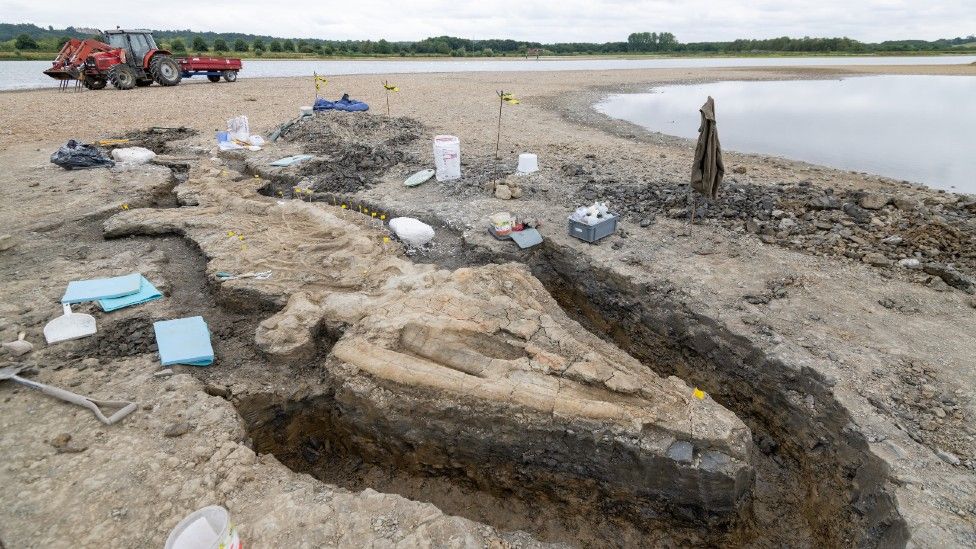
Details of the recent discovery of an ichthyosaur, or Sea Dragon, at the Rutland Water Nature Reserve have been made public this week.
The discovery was made in February 2021 and fully excavated later that summer.
The nature reserve, where the ichthyosaur was found, occupies the shoreline and shallow water lagoons along 9 miles of the western end of Rutland Water, covering a total area of 1000 acres. It was created in the 1970s with the construction of the reservoir and is a designated Special Protection Area of international importance for its populations of gadwall and shoveller birds. Managed by the Leicestershire and Rutland Wildlife Trust, it is also home to the Anglian Water Bird Watching Centre and Rutland Osprey Project.
The huge skeleton was discovered by Joe Davis, Conservation Team Leader at Leicestershire and Rutland Wildlife Trust, which operates the nature reserve in partnership with Anglian Water, during the routine draining of a lagoon island for re-landscaping at Rutland Water.
After reporting the discovery to the local council and Dr Mark Evans of the British Antarctic Survey, a further team of expert palaeontologists was assembled from around the UK, and the fragile remains of the huge skeleton were carefully excavated in August and September 2021.

The excavation was led by world-leading ichthyosaur expert Dr Dean Lomax and specialist palaeontological conservator Nigel Larkin, alongside marine reptile specialist Dr Mark Evans, Dr Emma Nicholls from the Horniman Museum and a group of volunteers with experience of excavating fossilised marine reptiles.
After the fossil was carefully excavated by the team, it was wrapped in a plaster jacket, made of wooden splints encased in plaster of paris, because it was so fragile. This method of conservation offered additional protection for the remains, and allowed them to be lifted in sections from the ground and moved safely to a research facility for further analysis. Altogether the fossil weighs over two tonnes.
The ichthyosaur is thought to be the biggest and most complete skeleton of its kind found to date in the UK, and is also thought to be the first ichthyosaur of its species (Temnodontosaurus trigonodon) found in the country. It is approximately 180 million years old, with a skeleton measuring around 10 metres in length and a skull weighing approximately one tonne.
Ichthyosaurs first appeared around 250 million years ago and went extinct 90 million years ago. They were an extraordinary group of marine reptiles that varied in size from 1 to more than 25 metres in length, and resembled dolphins in general body shape.
The discovery is not the first at Rutland Water, with two incomplete and much smaller ichthyosaurs found when the reservoir was initially constructed in the 1970s. It is however the first complete skeleton ever found at Rutland Water.
Main image credit - Anglian Water

A bir further North? Try out sister sites Belvoir Life and Stathern.org.uk